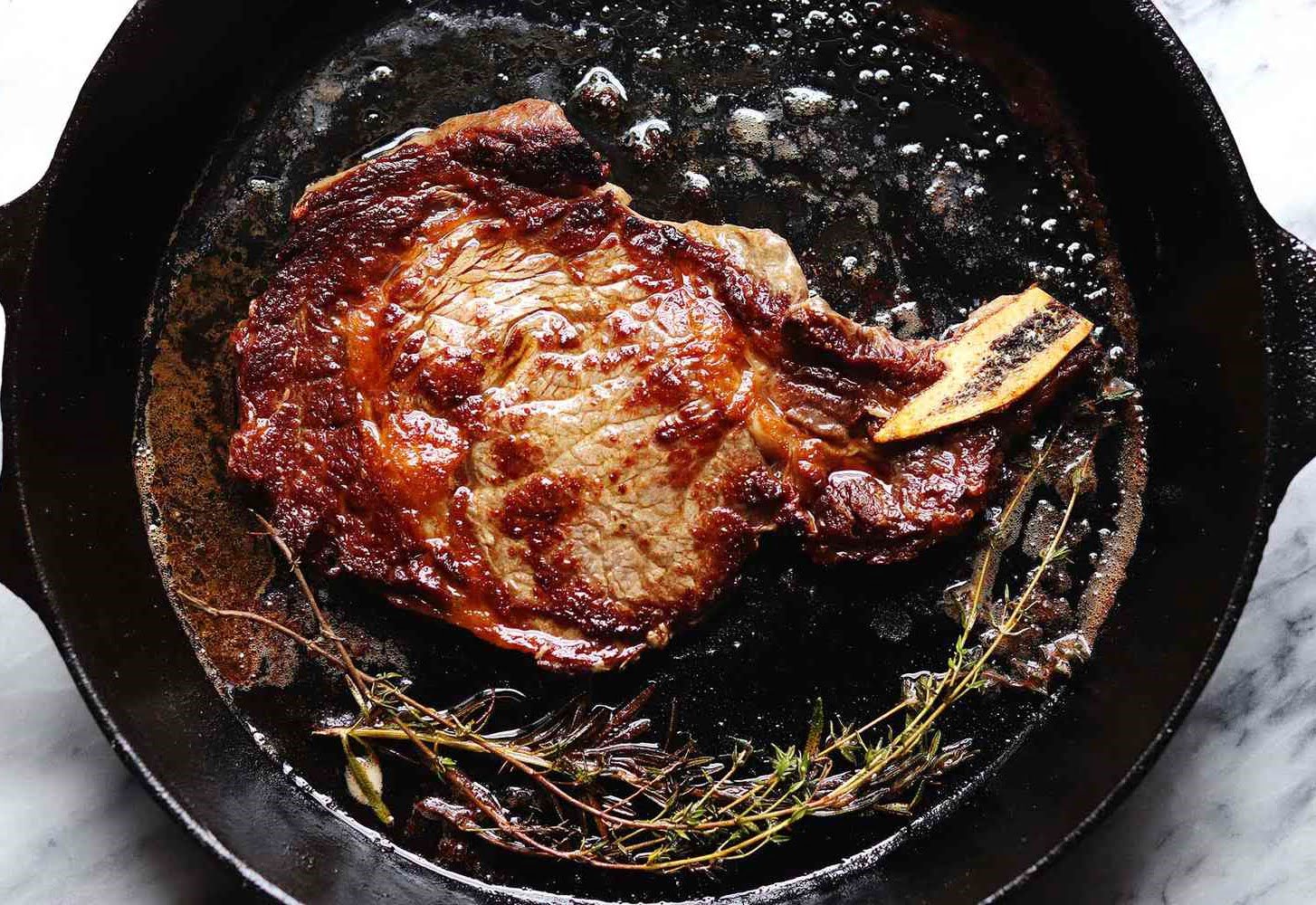

Articles
How To Cook Steak In A Electric Skillet
Modified: August 20, 2024
Learn how to cook steak to perfection using an electric skillet. Follow these expert articles and become a master in the kitchen.
(Many of the links in this article redirect to a specific reviewed product. Your purchase of these products through affiliate links helps to generate commission for Storables.com, at no extra cost. Learn more)
Introduction
Welcome to the world of cooking steak with an electric skillet! If you’re a steak lover looking for a convenient and efficient way to cook your favorite cuts, then using an electric skillet is a game-changer. With precise temperature control and even heat distribution, an electric skillet allows you to achieve that perfect sear and juicy interior every time.
In this article, we’ll explore the benefits of using an electric skillet to cook steak and guide you through the process step-by-step. From choosing the right electric skillet to seasoning the steak and determining its doneness, we’ve got you covered. So, let’s dive in and unlock the secrets of cooking steak in an electric skillet!
Key Takeaways:
- Elevate your steak game with an electric skillet, offering precise temperature control, even heat distribution, and convenient portability. Achieve restaurant-quality results at home with this versatile cooking tool.
- Properly prepare, season, and cook your steak in an electric skillet for a mouthwatering experience. Remember to rest the steak, determine its doneness, and maintain the skillet for optimal performance and longevity.
Benefits of Using an Electric Skillet to Cook Steak
When it comes to cooking steak, using an electric skillet offers a range of advantages that make it an ideal choice for steak enthusiasts. Here are some of the key benefits:
- Temperature Control: One of the biggest advantages of using an electric skillet is the ability to have precise temperature control. Most electric skillets come with temperature settings that allow you to adjust and maintain the desired heat level throughout the cooking process. This means you can achieve the perfect sear and cook your steak to perfection.
- Even Heat Distribution: Electric skillets are designed to distribute heat evenly across the cooking surface. This ensures that your steak cooks uniformly, resulting in a consistent texture and flavor. No more worrying about hot spots or uneven cooking!
- Convenience: Electric skillets are incredibly convenient to use. They heat up quickly, eliminating the need for preheating a traditional stovetop skillet. Additionally, electric skillets often come with non-stick surfaces, making them easy to clean up after cooking.
- Versatility: Electric skillets are not just limited to cooking steak; they can be used for a wide variety of other dishes as well. From sautéing vegetables to frying chicken, an electric skillet can handle it all. This versatility makes it a valuable addition to any kitchen.
- Portability: Unlike traditional stovetop skillets, electric skillets are portable. They can be easily moved around the kitchen or even taken outdoors for barbecue gatherings.
With these benefits in mind, it’s clear why cooking steak in an electric skillet is a smart choice. Not only does it offer precise temperature control and even heat distribution, but it also provides convenience, versatility, and portability.
Choosing the Right Electric Skillet for Cooking Steak
When it comes to cooking steak in an electric skillet, selecting the right skillet is crucial for achieving excellent results. Here are some factors to consider when choosing the perfect electric skillet for cooking steak:
- Size: Consider the size of the electric skillet based on your cooking needs. If you typically cook larger cuts of steak or want to cook multiple steaks at once, a larger skillet with a wider cooking surface would be ideal. However, if you have limited counter space or only cook smaller steaks, a compact-sized skillet may be more suitable.
- Temperature Range: Look for an electric skillet with a wide temperature range. This will allow you to have more control over the cooking process and achieve the desired level of doneness for your steak. Make sure the skillet reaches high temperatures for proper searing.
- Non-Stick Surface: Opt for an electric skillet with a non-stick cooking surface. This will prevent the steak from sticking and make it easier to flip and remove once cooked. A non-stick surface also simplifies the cleaning process.
- Heat Distribution: Ensure that the electric skillet provides even heat distribution across the cooking surface. This will help cook the steak uniformly and minimize the risk of overcooking or undercooking certain areas.
- Construction and Durability: Consider the material and construction of the electric skillet. Stainless steel skillets are known for their durability, while skillets with a thick aluminum base are excellent for heat conductivity. Look for a skillet with sturdy handles for easy and safe maneuvering.
- Temperature Control: Opt for a skillet with precise temperature controls and a thermostat. This will allow you to adjust and maintain the desired heat level throughout the cooking process.
- Additional Features: Some electric skillets come with additional features such as a glass lid, which allows you to monitor the cooking progress without lifting the lid and releasing heat. Other features like a warming function or a detachable power cord can also be convenient.
Considering these factors will help you choose an electric skillet that suits your cooking needs and enhances your steak-cooking experience. Keep in mind that investing in a high-quality skillet will ensure better performance and longevity.
Preparing the Steak for Cooking
Before you start cooking your steak in an electric skillet, it’s important to properly prepare the steak to ensure maximum flavor and tenderness. Here’s how to prepare your steak for cooking:
- Thawing the Steak: If your steak is frozen, make sure to thaw it completely before cooking. The best way to thaw a steak is by transferring it from the freezer to the refrigerator and allowing it to thaw slowly overnight. This ensures even thawing and prevents bacterial growth.
- Trimming Excess Fat: Trim any excess fat from the steak using a sharp knife. Leave a thin layer of fat for flavor and moisture, but remove any large chunks or excessive marbling that could cause flare-ups during cooking.
- Bring the Steak to Room Temperature: Allow the steak to come to room temperature before cooking. This ensures more even cooking and reduces the risk of overcooking the outer layer while the center remains undercooked.
- Pat Dry and Season: Use a paper towel to pat the steak dry on both sides. This helps achieve a better sear. Season the steak generously with salt and pepper or your favorite steak seasoning blend. You can also add other spices or herbs to enhance the flavor.
- Optional: Marinating the Steak: If you prefer, you can marinate the steak for added flavor. Choose a marinade that complements the steak, such as a mixture of soy sauce, Worcestershire sauce, garlic, and herbs. Place the steak and marinade in a resealable plastic bag and refrigerate for at least 30 minutes or up to overnight.
- Let the Steak Rest: After seasoning or marinating, let the steak rest at room temperature for about 15-30 minutes. This allows the seasoning to penetrate the meat and helps the steak cook more evenly.
By properly preparing the steak, you’ll enhance its natural flavor and tenderness, setting the stage for a delicious and satisfying meal. Take the time to thaw, trim, season, and let the steak rest before cooking, and you’ll be rewarded with a mouthwatering steak experience.
Seasoning the Steak
Seasoning is an essential step when it comes to cooking steak in an electric skillet. It adds flavor and enhances the taste of the meat. Here’s how to season your steak before cooking:
- Basic Seasoning: The simplest way to season a steak is with salt and pepper. Sprinkle both sides of the steak generously with salt and freshly ground black pepper. The salt helps to bring out the natural flavors of the meat, while the pepper adds a pleasant kick.
- Steak Seasoning Blends: If you want to add more depth of flavor to your steak, consider using a steak seasoning blend. These blends typically contain a combination of spices, herbs, and sometimes sugar for a well-rounded taste. You can find pre-made steak seasoning blends in the grocery store, or you can make your own blend at home using ingredients like garlic powder, onion powder, paprika, and dried herbs.
- Marinades and Rubs: Another option for seasoning your steak is to use a marinade or dry rub. Marinades typically consist of acidic ingredients like lemon juice or vinegar, along with herbs, spices, and oil. Allow the steak to marinate for a few hours or overnight for maximum flavor infusion. Dry rubs, on the other hand, are a mixture of spices and herbs that are rubbed onto the surface of the steak before cooking.
- Flavorful Ingredients: You can also experiment with additional flavorful ingredients to enhance the seasoning of your steak. Some popular options include minced garlic, chopped fresh herbs like rosemary or thyme, or a pat of butter placed on top of the steak before cooking.
Remember to season both sides of the steak and gently press the seasonings onto the surface to help them adhere. Let the seasoned steak sit for a few minutes before cooking to allow the flavors to penetrate the meat.
Feel free to get creative with your seasoning choices, but remember that the quality of the steak itself should shine through. The right amount of seasoning should enhance the natural flavors of the meat without overpowering them.
Preheating the Electric Skillet
Preheating the electric skillet is an important step in ensuring that your steak cooks evenly and develops that delicious sear on the outside. Here’s how to preheat your electric skillet before cooking:
- Ensure Proper Placement: Place the electric skillet on a heat-resistant and stable surface. Make sure there is enough space around the skillet for proper ventilation and safety.
- Adjust Temperature Settings: Turn on the electric skillet and adjust the temperature settings based on the desired level of doneness for your steak. Different types and cuts of steak require different cooking temperatures.
- Preheat for a Few Minutes: Allow the electric skillet to preheat for a few minutes until it reaches the desired temperature. This can vary depending on the skillet and the specific temperature settings you’ve chosen.
- Perform the Water Droplet Test (Optional): If you want to check if the skillet is properly preheated, you can perform the water droplet test. Sprinkle a few drops of water onto the surface of the skillet. If the water sizzles and evaporates almost immediately, the skillet is ready for cooking. If the water just sits on the surface, continue preheating until it sizzles.
- Add a Small Amount of Oil (Optional): If your electric skillet doesn’t have a non-stick coating or you want to add some extra flavor, you can add a small amount of oil to the preheated skillet. Use an oil with a high smoke point, such as vegetable oil or canola oil, and swirl it around to evenly coat the surface of the skillet.
Preheating the electric skillet ensures that the cooking surface is hot and ready for your steak. This helps to create a beautifully seared crust while sealing in the juices of the meat.
Remember to exercise caution when using the electric skillet and always follow the manufacturer’s instructions for preheating and temperature settings. Safety should be your top priority throughout the cooking process.
Make sure the electric skillet is preheated to a high temperature before adding the steak. This will help to create a nice sear on the outside while keeping the inside juicy.
Cooking the Steak
Now comes the exciting part – cooking the steak in your electric skillet! With the skillet preheated and the steak seasoned, it’s time to achieve that perfect sear and mouthwatering doneness. Here’s how to cook your steak in an electric skillet:
- Place the Steak in the Skillet: Carefully place the seasoned steak into the preheated electric skillet. You should hear a sizzling sound as the steak touches the hot surface.
- Avoid Overcrowding: Cook the steak in batches if necessary to avoid overcrowding the skillet. This ensures that each steak has enough space to cook evenly.
- Cook Time per Side: Cook the steak for a few minutes on one side, depending on the thickness and desired level of doneness. For a perfect medium-rare steak, a good rule of thumb is to cook it for about 4-5 minutes per side. Adjust the cooking time based on your preference and the thickness of the steak.
- Flipping the Steak: Use tongs or a spatula to carefully flip the steak to the other side. Be gentle to avoid losing any juices or disturbing the sear.
- Cook Time for the Other Side: Continue cooking the steak for an additional few minutes on the other side. The total cooking time will vary depending on the thickness and desired doneness. Refer to a steak doneness chart to determine your preferred cooking time. Remember to adjust the heat if needed to prevent excessive browning or burning.
- Checking the Temperature: If you want to ensure the steak’s doneness, use a meat thermometer to check the internal temperature. The recommended temperatures for steak are 130°F (54°C) for medium-rare, 140°F (60°C) for medium, and 160°F (71°C) for well-done. Insert the thermometer into the thickest part of the steak without touching the bone for an accurate reading.
Throughout the cooking process, resist the temptation to constantly flip or poke the steak. Allow each side to develop a nice sear and cook undisturbed to achieve the best results. Remember that the steak will continue to cook slightly after being removed from the skillet, so factor in a few minutes of resting time.
Keep in mind that cooking times may vary depending on the cut, thickness, and desired level of doneness. Practice and experience will help you refine your cooking technique and achieve the perfect steak every time.
Determining the Steak’s Doneness
When it comes to cooking steak, determining the doneness is crucial to ensure it’s cooked to your desired level of perfection. Here are a few methods to determine the steak’s doneness:
- Visual Inspection: The appearance of the steak can provide a good indication of its doneness. Use the following guidelines as a general reference:
- Rare: The steak will have a deep, reddish center with a cool, red interior.
- Medium-Rare: The center will be pinkish-red and slightly warm.
- Medium: The center will be pink and warm.
- Medium-Well: The center will be slightly pink with a hint of gray.
- Well-Done: The center will be gray and no trace of pink.
- Touch Test: The touch or feel of the steak can give you an idea of its doneness. Use the following guide:
- Rare: Gently press the steak with your fingertip, and it should feel soft and spring back quickly.
- Medium-Rare: The steak should feel a bit firmer but still spring back moderately.
- Medium: The steak should have a firmness with a slight bounce when pressed.
- Medium-Well: The steak will be firmer and have less give when pressed.
- Well-Done: The steak will feel very firm and offer little or no resistance when pressed.
- Meat Thermometer: Using a meat thermometer is the most accurate way to determine the steak’s doneness. Insert the thermometer into the thickest part of the steak without touching the bone. Refer to the following temperature guide:
- Rare: 120-130°F (49-54°C)
- Medium-Rare: 130-135°F (54-57°C)
- Medium: 135-145°F (57-63°C)
- Medium-Well: 145-155°F (63-68°C)
- Well-Done: 160°F (71°C) and above
Remember, the steak’s doneness is a matter of personal preference, so feel free to adjust the cooking time based on your desired level of meaty bliss. If the steak is not yet done to your liking, you can continue cooking it for a bit longer, but be mindful not to overcook.
By using one or a combination of these methods, you’ll be able to accurately determine the doneness of your steak and ensure that it’s cooked to perfection every time.
Resting and Serving the Steak
Resting the steak after cooking is a critical step that allows the juices to redistribute and the fibers to relax, resulting in a more tender and flavorful steak. Here’s how to properly rest and serve your steak:
- Remove from the Skillet: Using tongs or a spatula, carefully remove the cooked steak from the electric skillet and transfer it to a clean cutting board or a warmed serving plate.
- Let it Rest: Allow the steak to rest for about 5-10 minutes. This resting period allows the internal juices to redistribute throughout the meat, enhancing its tenderness and preserving its juiciness. Tent the steak loosely with aluminum foil to retain some warmth during the resting period.
- Carryover Cooking: Keep in mind that the steak will continue to cook slightly during the resting phase, so factor that into your cooking time. It’s better to slightly undercook the steak in the skillet to achieve the desired doneness once rested.
- Slicing and Serving: After the resting period, it’s time to slice and serve the steak. Use a sharp knife to cut the steak against the grain into thin or thick slices, depending on your preference. Slicing against the grain ensures more tender and bite-sized pieces.
- Plating and Garnishing: Arrange the slices of steak on individual plates or a serving platter. You can garnish the steak with fresh herbs, such as parsley or cilantro, for added visual appeal. Serve the steak hot and enjoy!
Resting the steak is crucial as it allows the flavors to meld together and results in a more enjoyable eating experience. The resting period also prevents the steak from releasing an excessive amount of juices when sliced.
While the steak is resting, you can take the opportunity to prepare any desired side dishes or sauces to accompany the steak. From roasted vegetables to mashed potatoes, the possibilities are endless to create a complete and delectable meal.
Remember, proper resting and serving of the steak ensures that you serve a juicy, flavorful, and succulent meal to delight your taste buds.
Cleaning and Maintaining the Electric Skillet
Properly cleaning and maintaining your electric skillet is essential for its longevity and optimal performance. Here are some tips on how to clean and maintain your electric skillet:
- Cool Down the Skillet: Allow the electric skillet to cool down completely before cleaning. Never attempt to clean it while it’s still hot, as it can lead to burns or damage.
- Disconnect from Power: Ensure that the electric skillet is unplugged from the power source before starting the cleaning process.
- Remove the Heat Control: If possible, detach the heat control from the skillet following the manufacturer’s instructions. This helps prevent damage to the electrical components during cleaning.
- Hand Wash the Skillet: Most electric skillets have a non-stick coating, so it’s best to hand wash them to avoid damaging the non-stick surface. Use warm soapy water and a sponge or soft cloth to gently clean the interior and exterior of the skillet. Avoid using abrasive cleaners or scrubbers that can scratch the non-stick coating.
- Pay Attention to Stubborn Stains: For stubborn stains or cooked-on residues, make a paste of baking soda and water and apply it to the affected areas. Let it sit for a few minutes, then gently scrub with a soft brush or sponge. Rinse thoroughly with warm water and dry with a soft towel.
- Clean the Heat Control: If the heat control is detachable, clean it separately following the manufacturer’s instructions. If it’s not detachable, wipe it with a damp cloth to remove any spills or residue. Never immerse the heat control in water or submerge it in any liquid.
- Store Properly: Before storing the electric skillet, ensure that it is completely dry to prevent the growth of mold or bacteria. Store it in a cool, dry place, preferably with the heat control detached, to maximize its lifespan and prevent any accidental damage.
- Avoid Submerging the Skillet: Unless explicitly stated by the manufacturer, avoid immersing the electric skillet in water or submerging it completely. This can damage the electrical components and render the skillet unusable.
Regular maintenance and cleaning of your electric skillet will help prolong its lifespan and maintain its performance. Follow these guidelines to keep your skillet in top-notch condition and ready for the next delicious steak-cooking session.
Always refer to the manufacturer’s instructions for specific cleaning recommendations and precautions for your particular electric skillet model.
Conclusion
Using an electric skillet to cook steak is a convenient and efficient way to achieve delicious, restaurant-quality results in the comfort of your own home. With precise temperature control, even heat distribution, and versatility, an electric skillet offers numerous benefits for steak enthusiasts.
By selecting the right electric skillet, properly preparing the steak, seasoning it to perfection, preheating the skillet, cooking the steak to your desired level of doneness, and allowing it to rest before serving, you can create a mouthwatering steak experience that will delight your taste buds.
Remember to clean and maintain your electric skillet properly to ensure its longevity and optimal performance. Following the recommended cleaning guidelines and storing it in a safe place will keep your skillet in pristine condition for many more steak-cooking adventures to come.
So, why wait? Grab your electric skillet, choose your favorite cut of steak, and get ready to enjoy a tender, juicy, and perfectly cooked steak right at home. Explore different seasonings, experiment with cooking times, and savor the results of your culinary masterpiece.
Cooking steak in an electric skillet may just revolutionize the way you prepare this beloved dish. Embrace the convenience, precision, and flavor that an electric skillet offers, and elevate your steak-cooking game to new heights. Happy cooking!
Hungry for more culinary adventures with your electric skillet? Don't miss out on valuable insights into Electric Skillet Cooking. Curious about expanding your electric appliance repertoire? Try Electric Cooking with carrots for a quick, healthy side. And if you're eager to spice up your meal rotation, check out our collection of Skillet Recipes, perfect for any occasion!
Frequently Asked Questions about How To Cook Steak In A Electric Skillet
Was this page helpful?
At Storables.com, we guarantee accurate and reliable information. Our content, validated by Expert Board Contributors, is crafted following stringent Editorial Policies. We're committed to providing you with well-researched, expert-backed insights for all your informational needs.
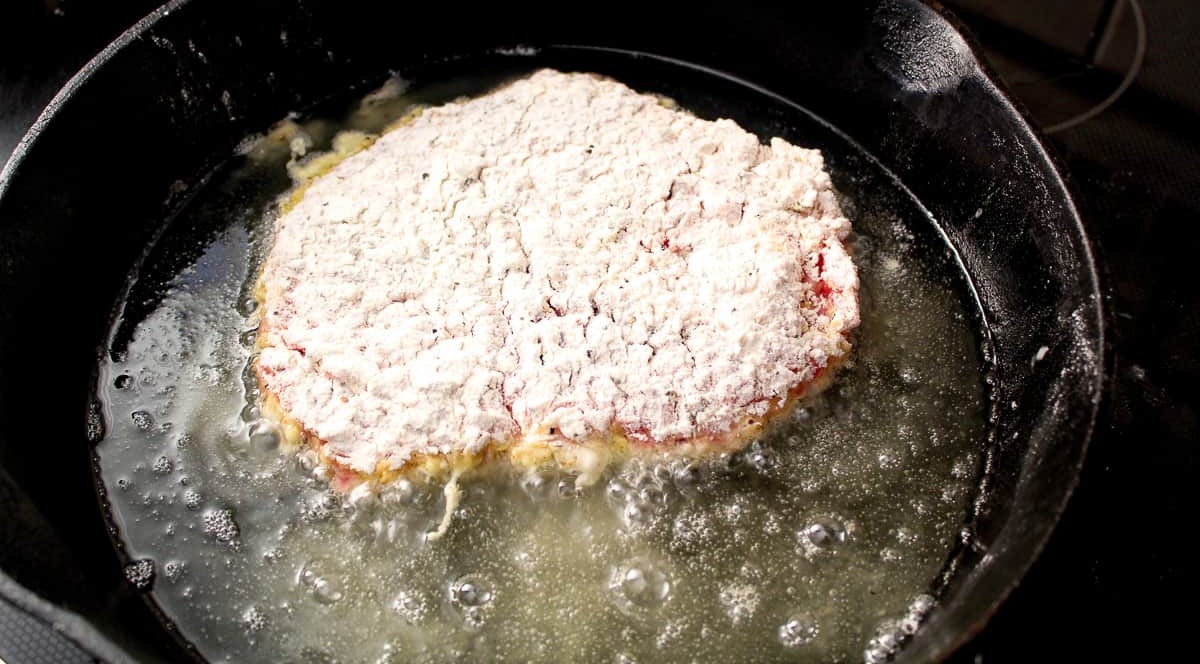
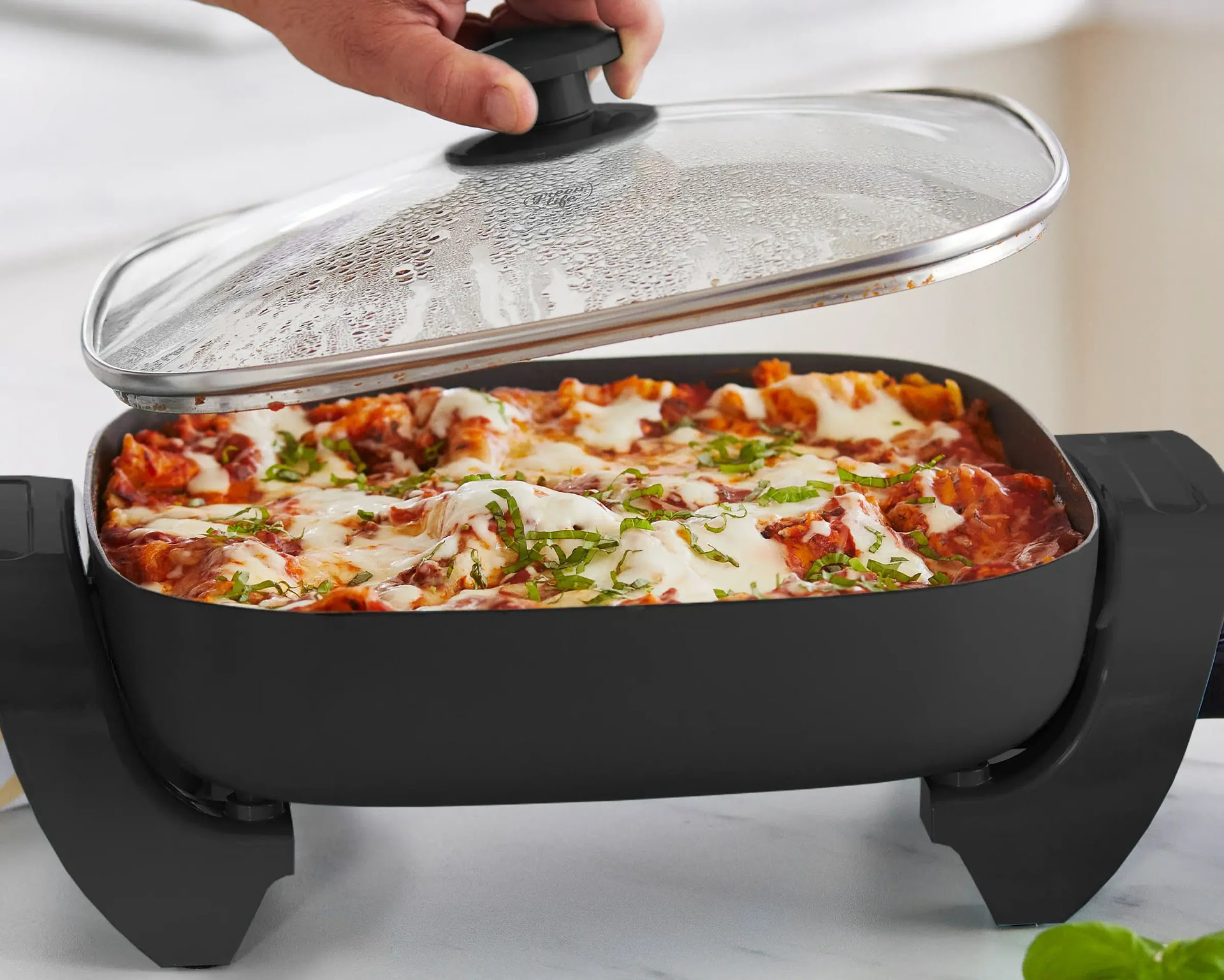

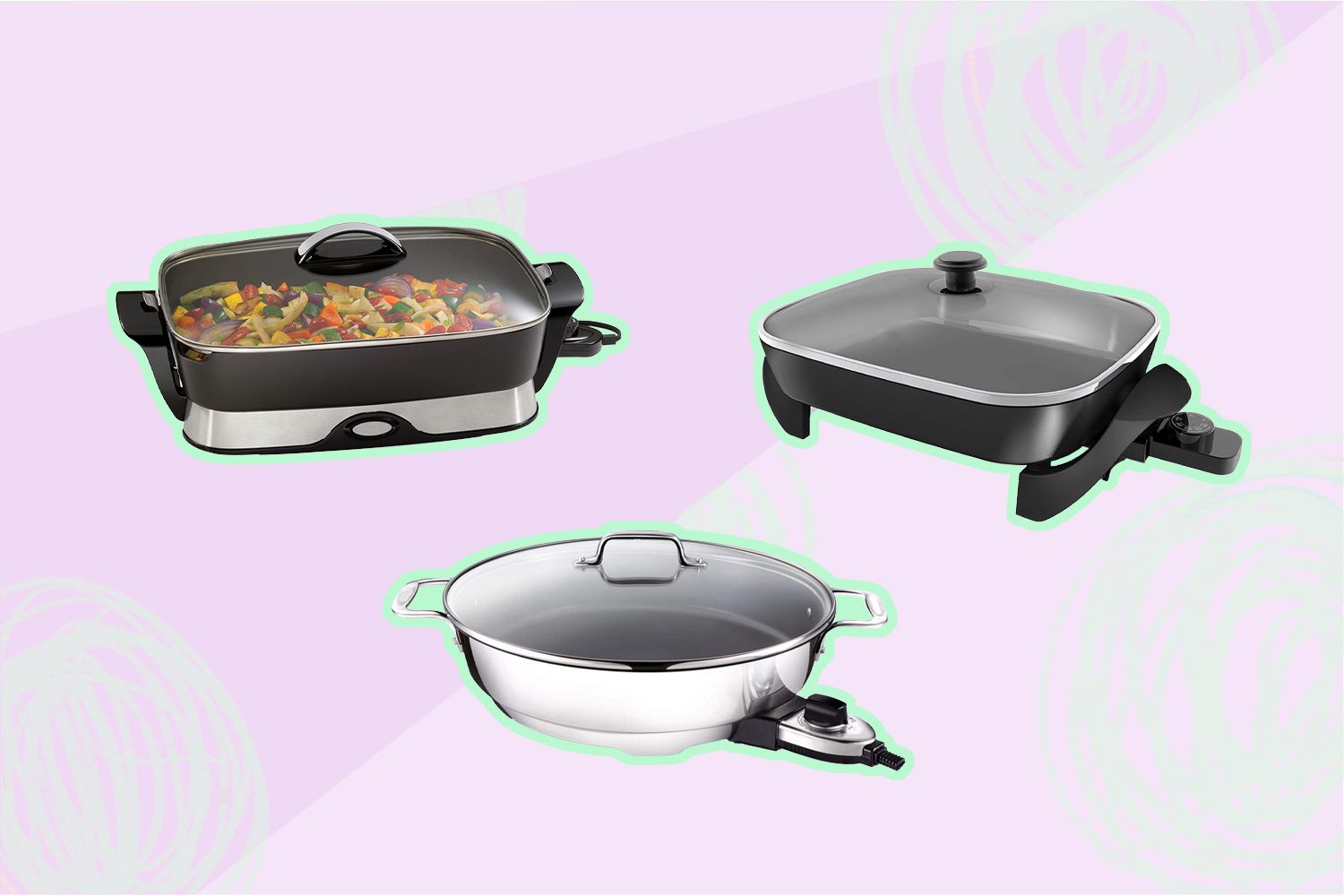
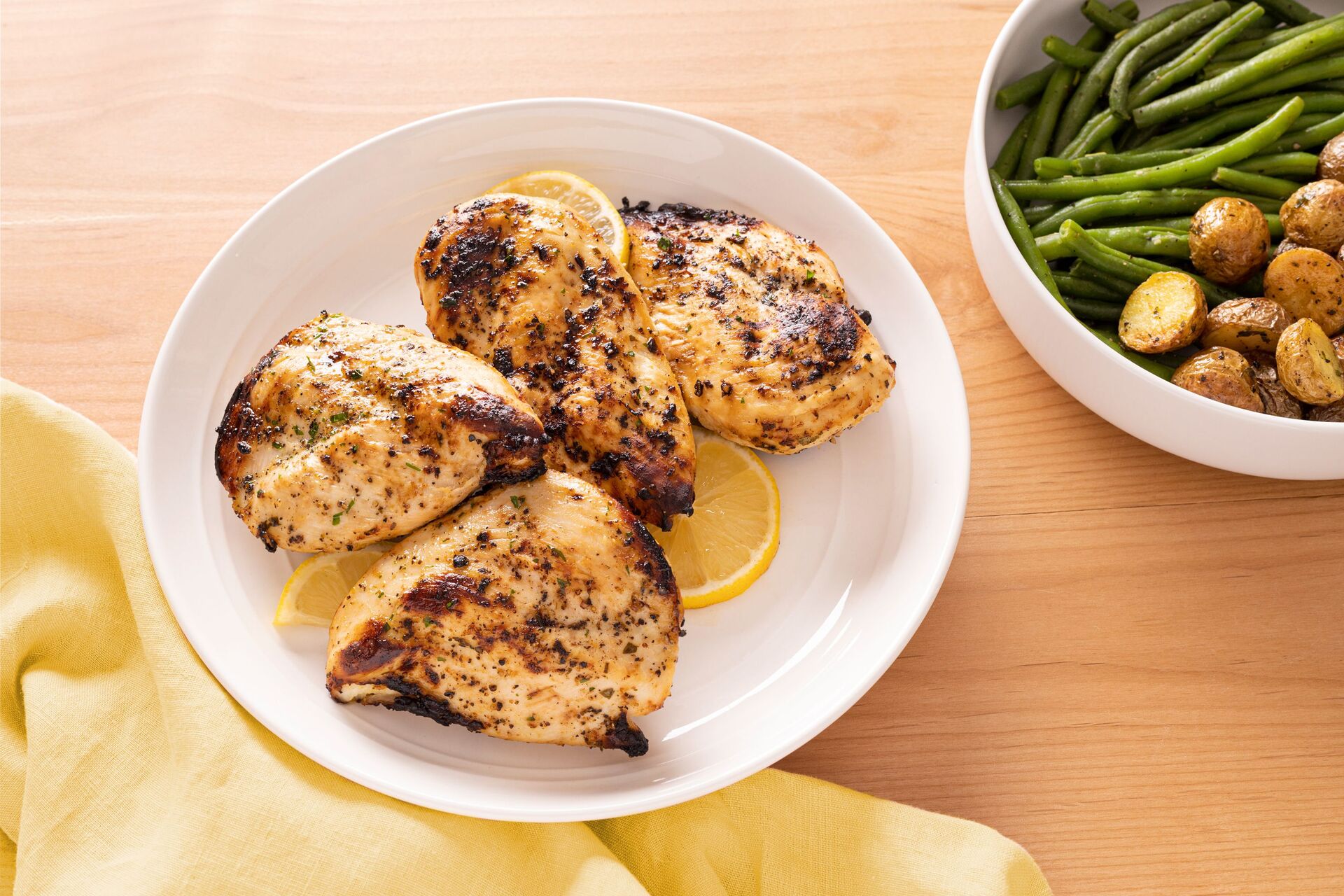
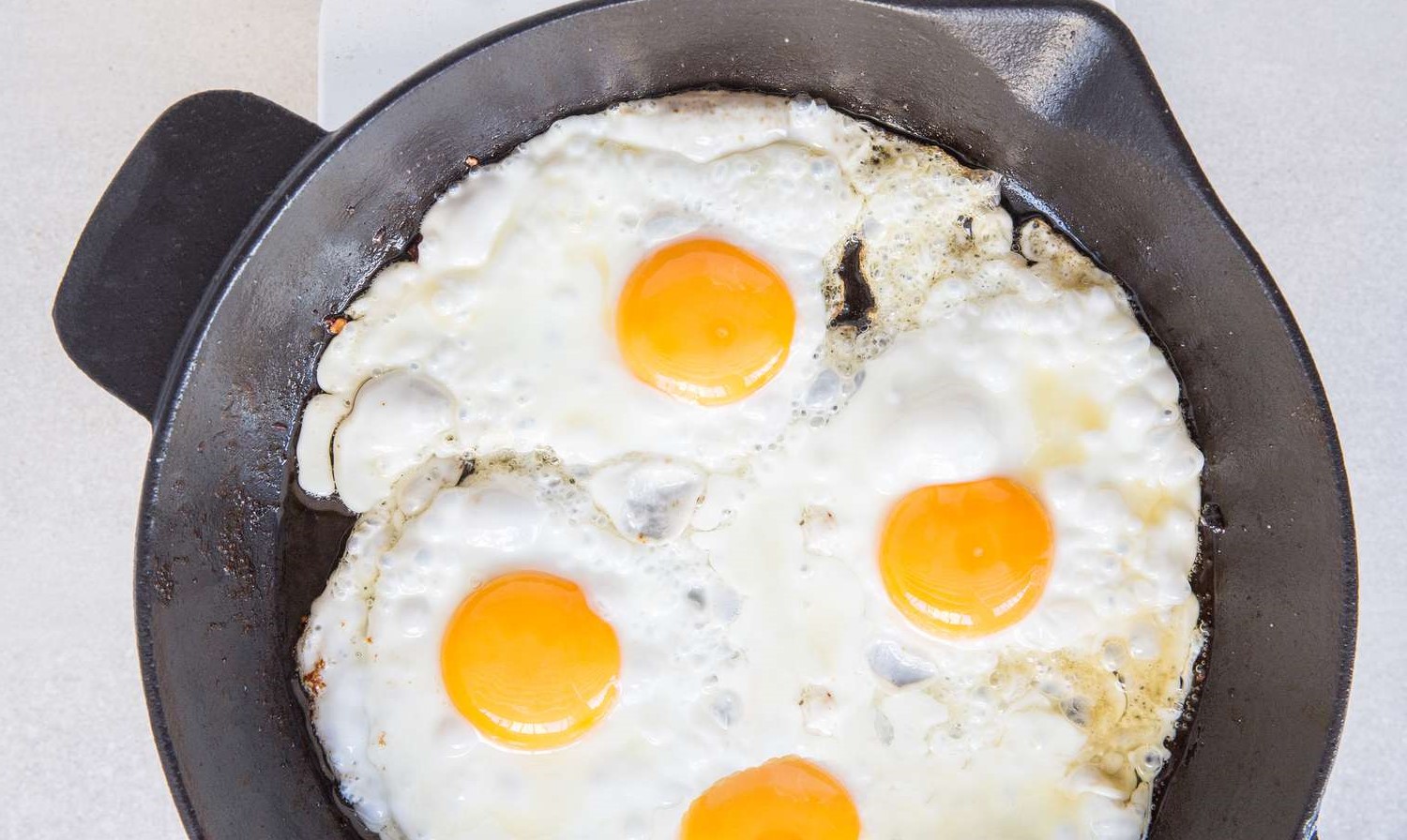

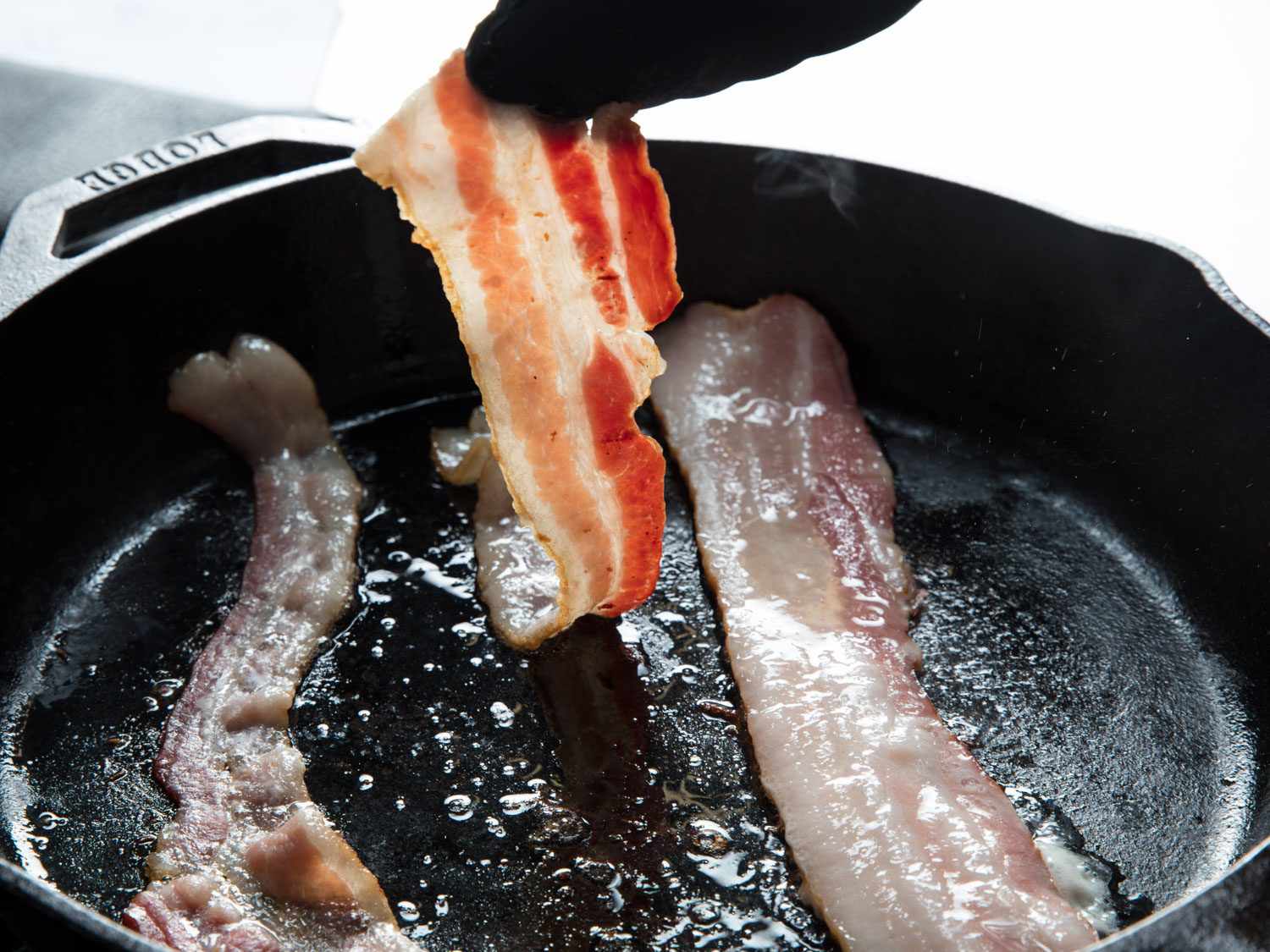
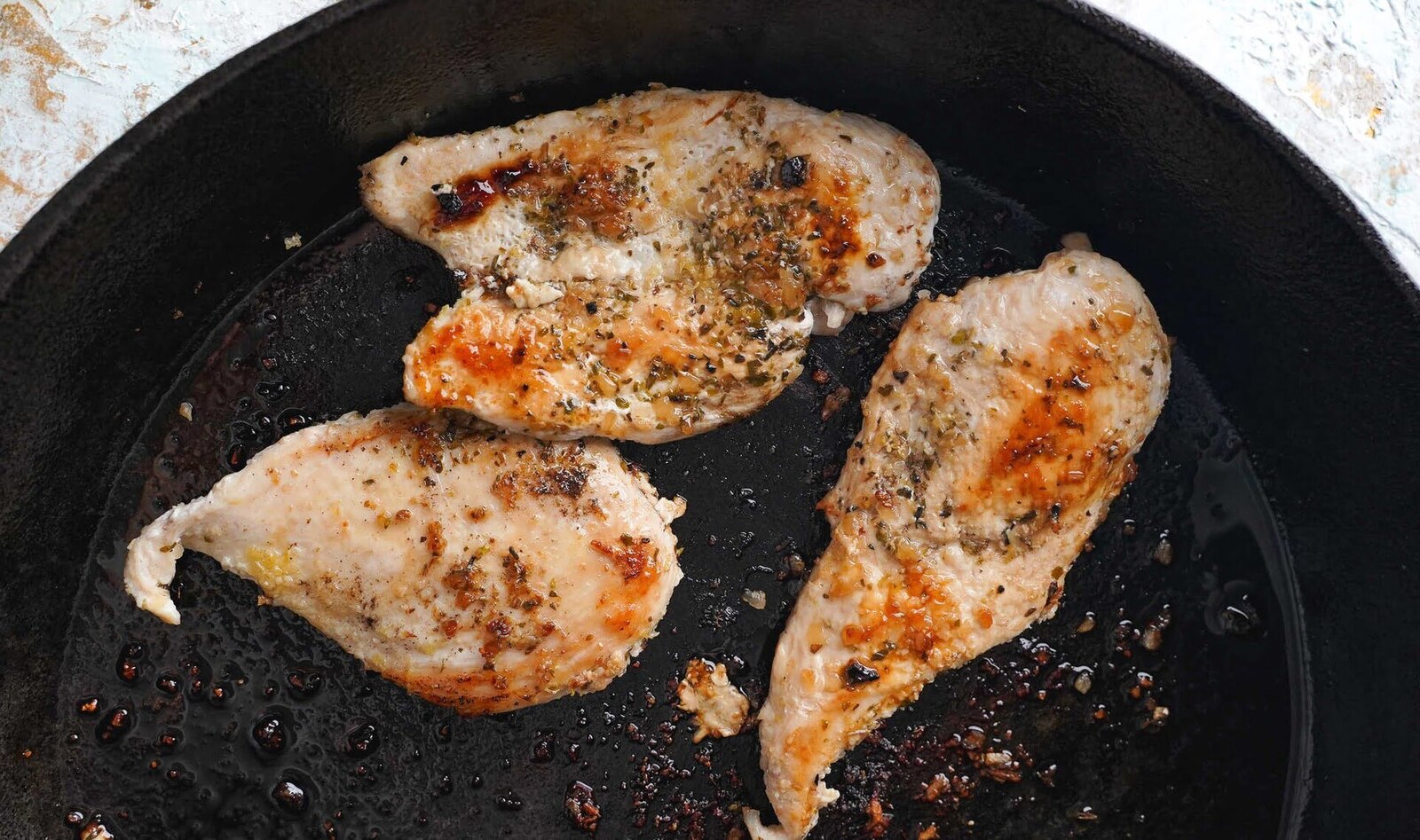
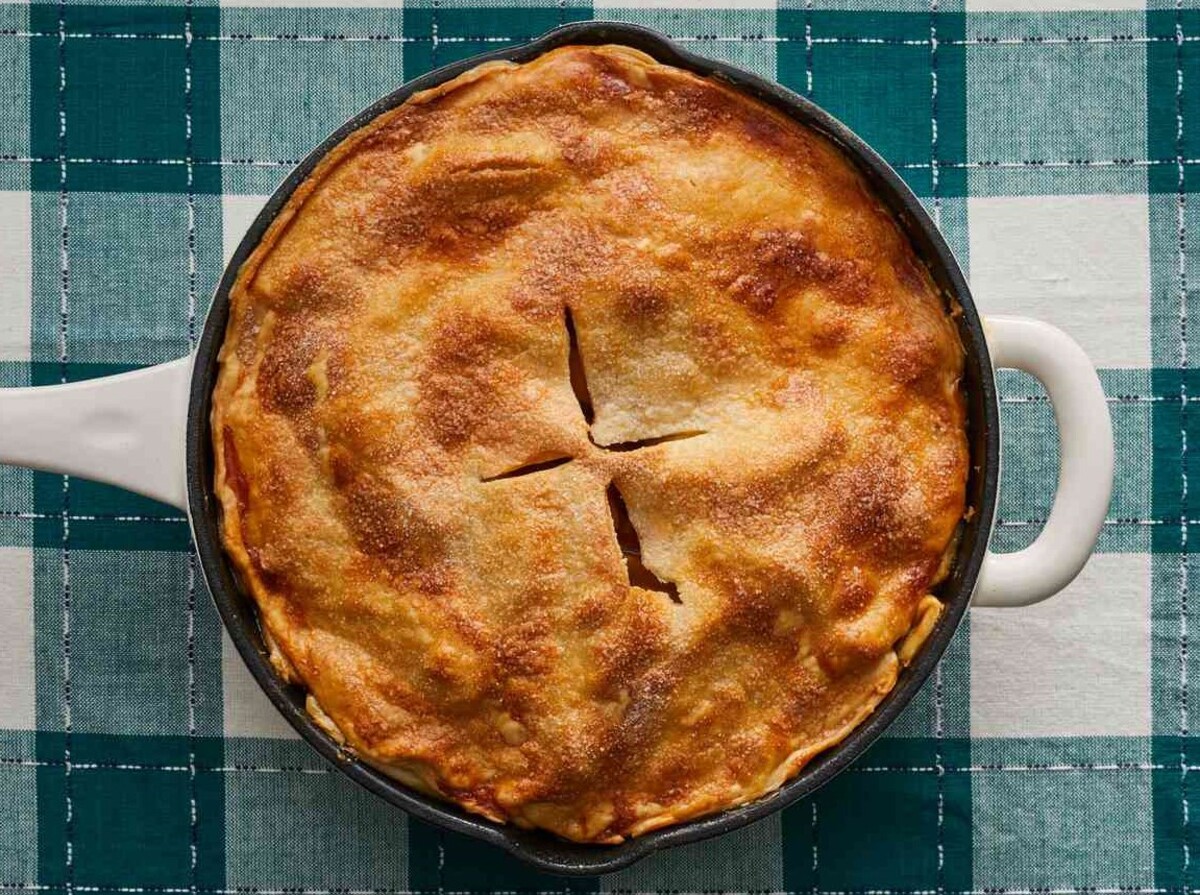
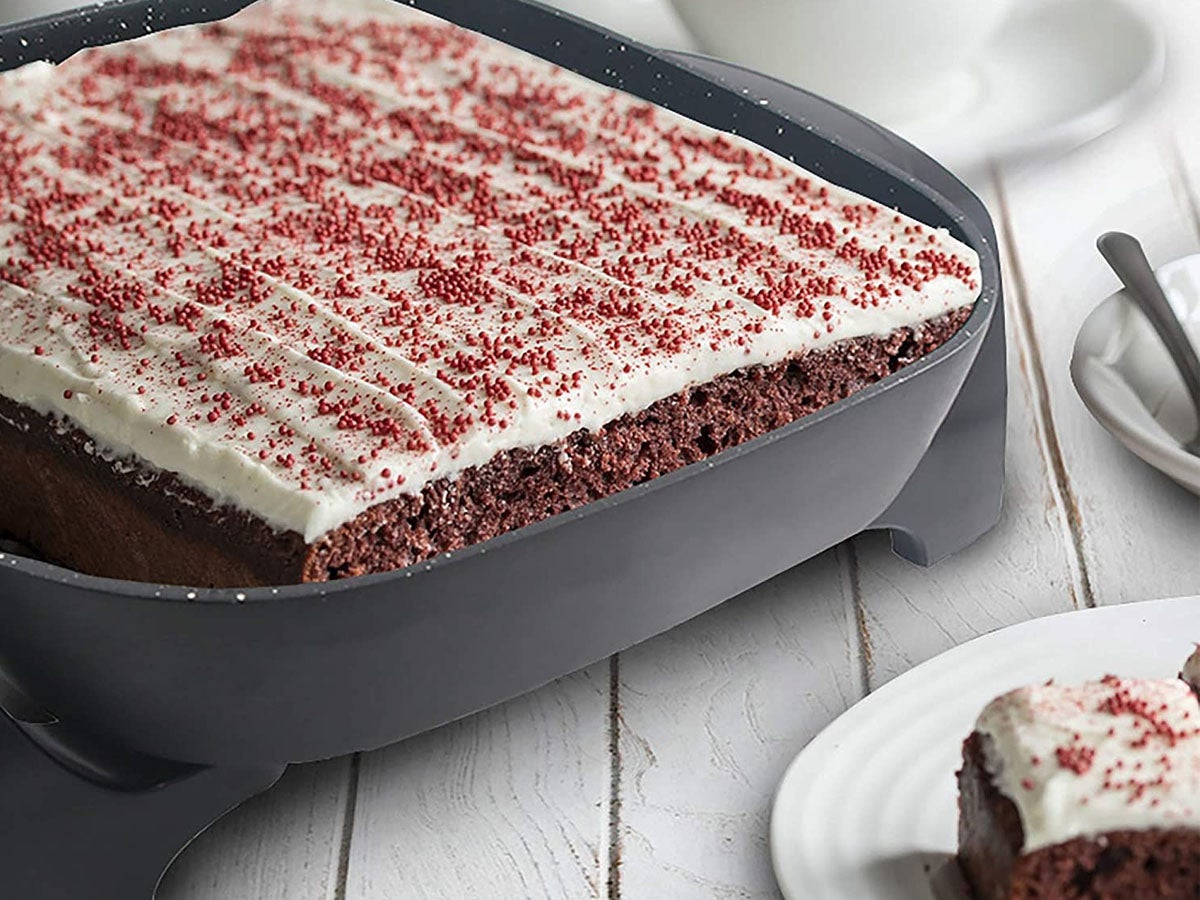
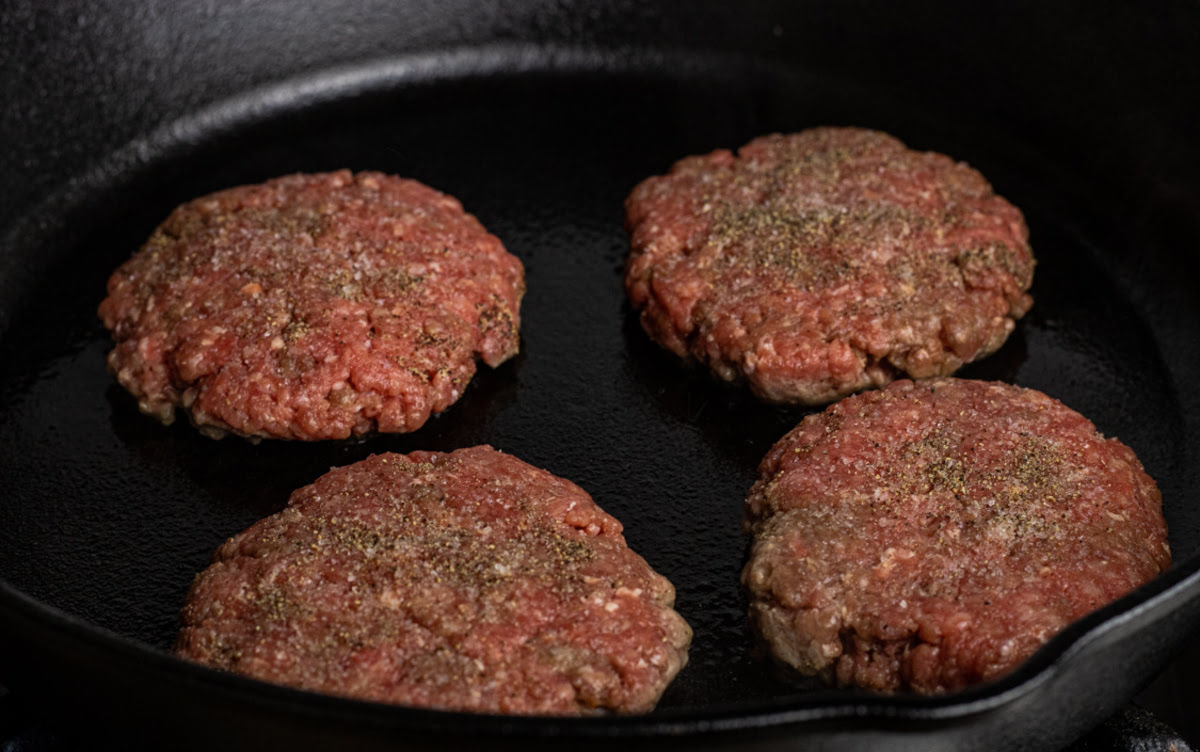
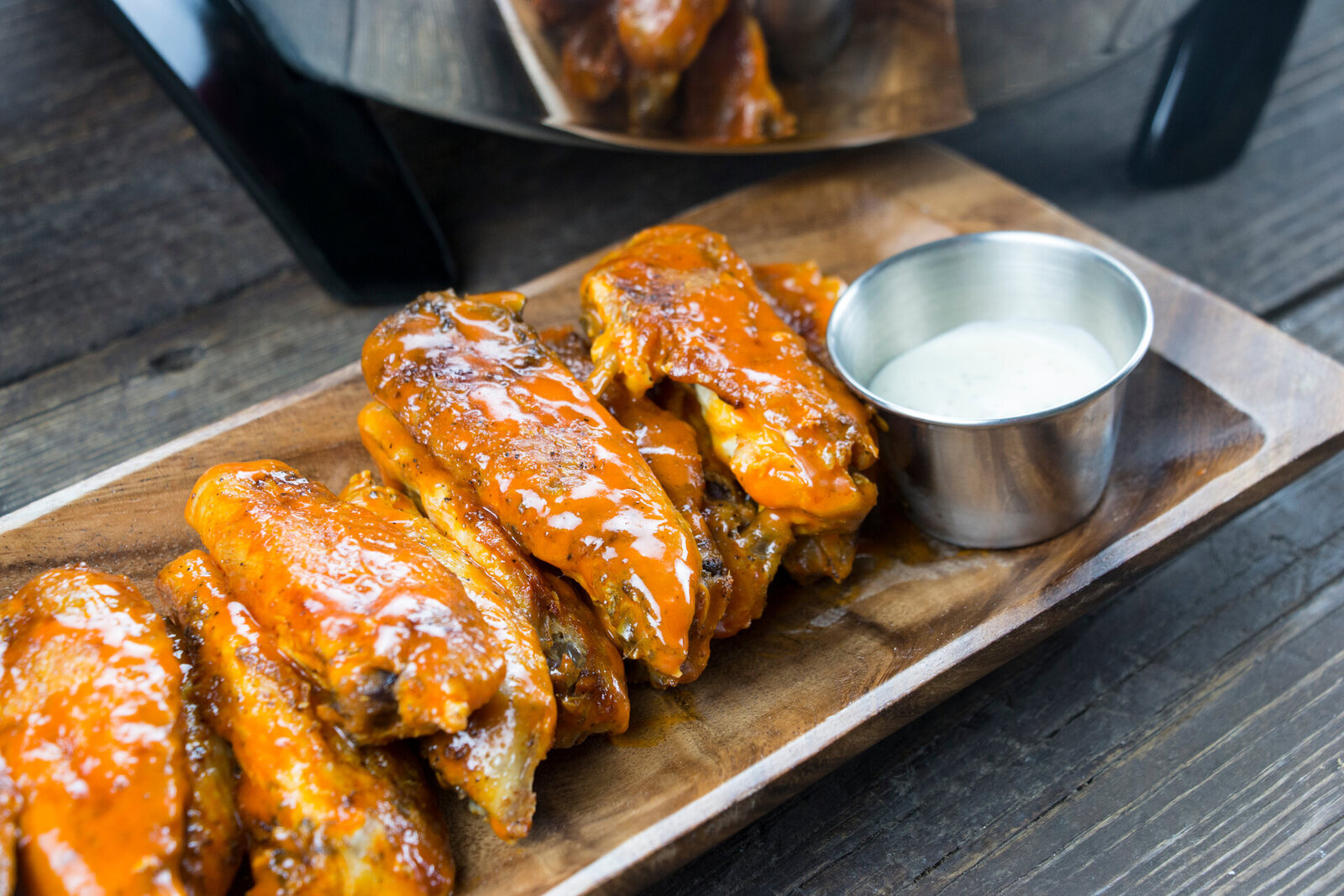

0 thoughts on “How To Cook Steak In A Electric Skillet”